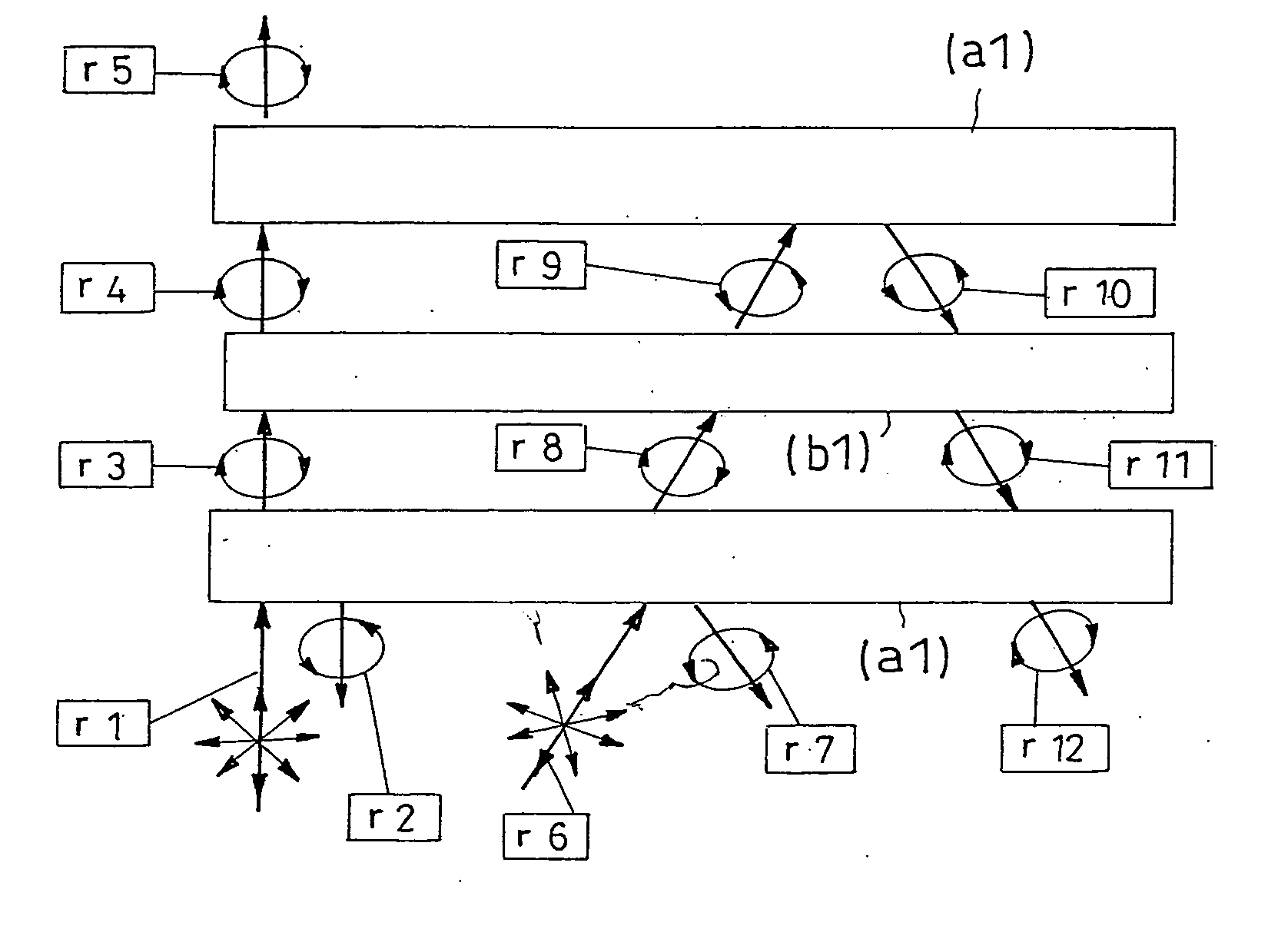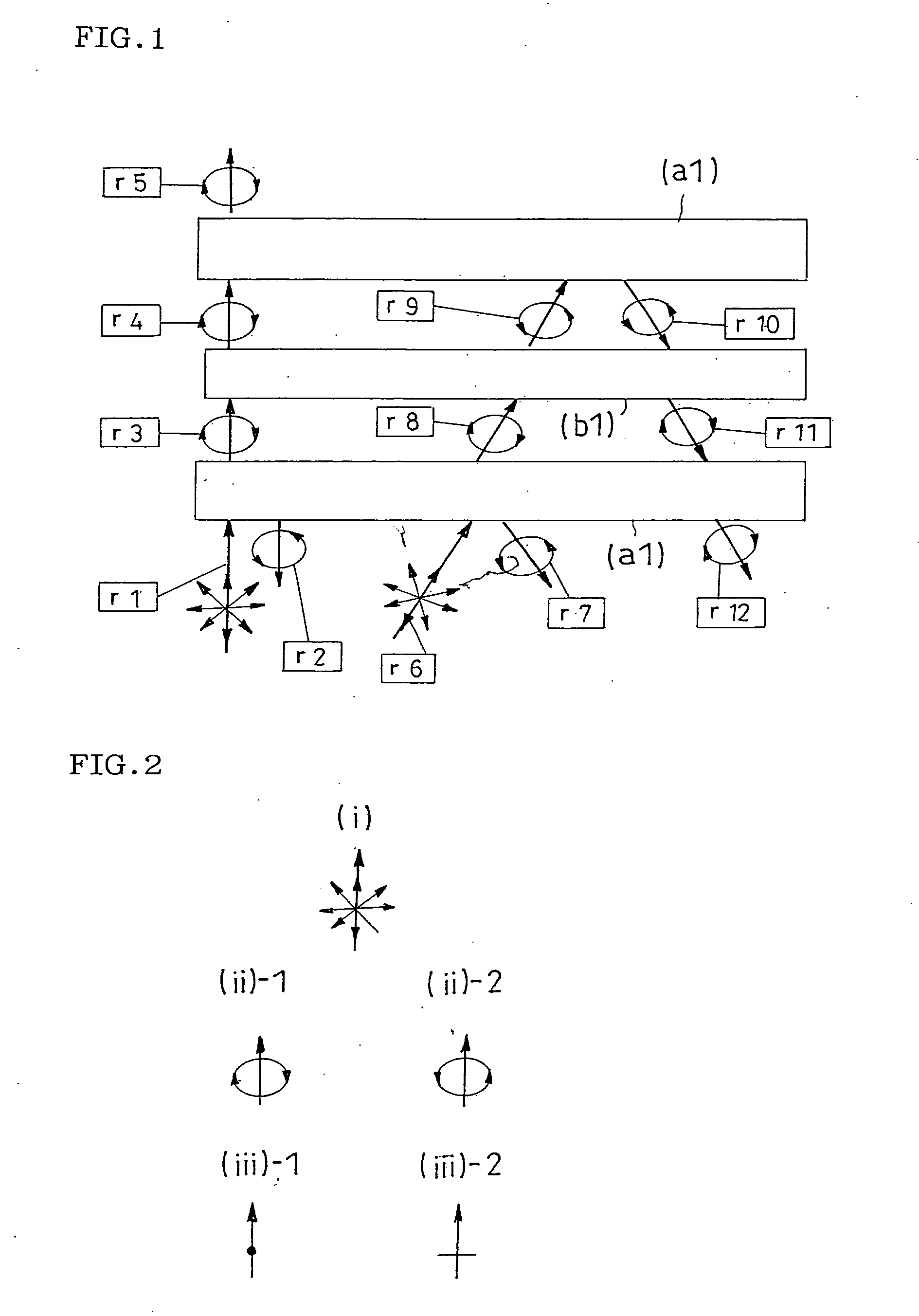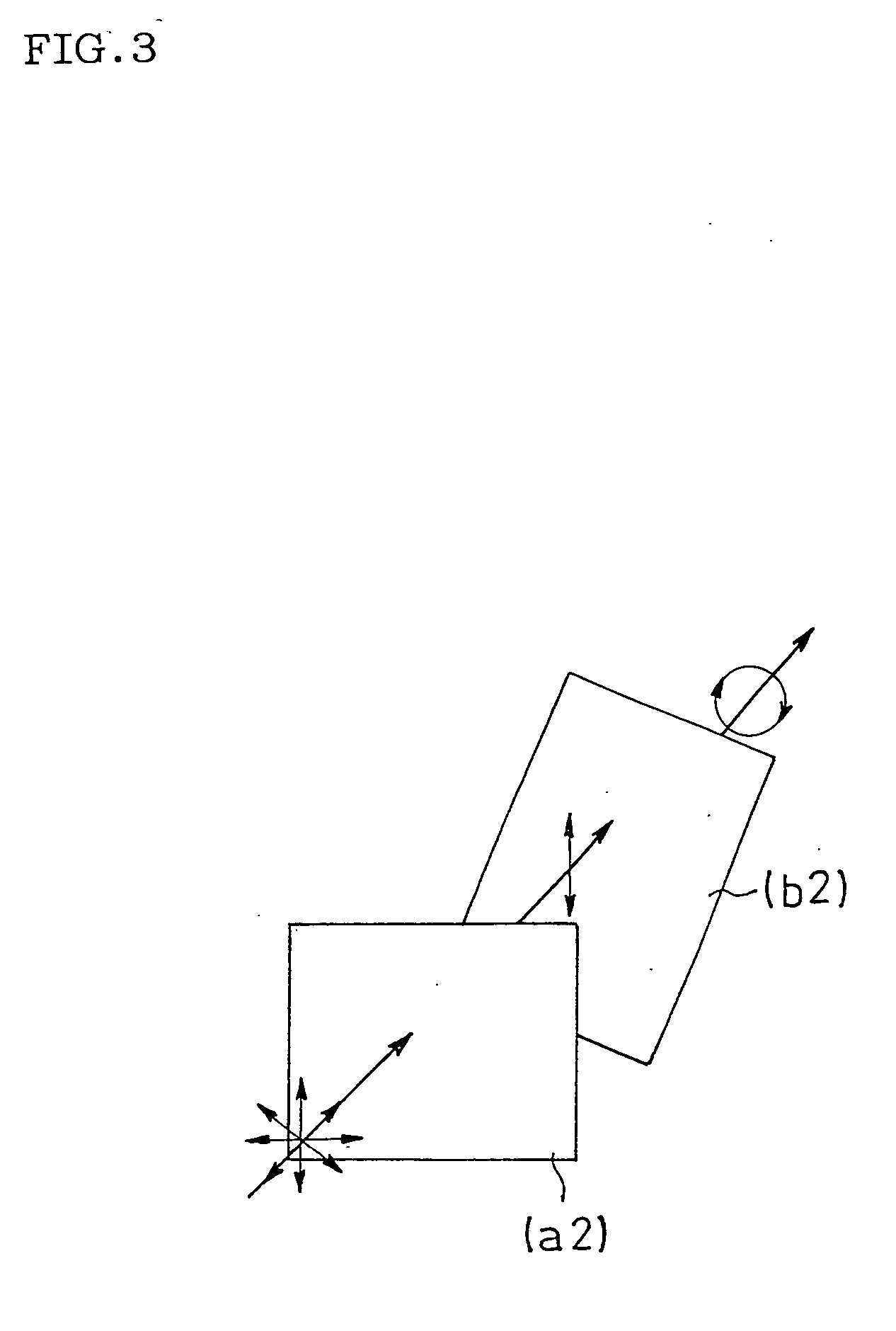Light converging system and transmission liquid crystal display
- Summary
- Abstract
- Description
- Claims
- Application Information
AI Technical Summary
Benefits of technology
Problems solved by technology
Method used
Image
Examples
example 1
(Preparation of Second Light Condensing Element (Y))
[0284] Used as a second light condensing element (Y) was an evaporation-deposited multilayer film band pass filter with 15 TiO2 / SiO2 layers. A polyethylene terephthalate film with a thickness of 50 μm was used as a base material and a total thickness was about 53 μm. A design table including thickness of layers of the evaporation-deposited thin film is shown in Table 1 described blow.
TABLE 1LayersmaterialLayer thickness (nm)15TiO292.114SiO2130.113TiO268.312SiO297.211TiO263.210SiO288.29TiO2152.18SiO292.87TiO270.76SiO250.35TiO2148.64SiO295.83TiO265.52SiO296.91TiO265.3
[0285] Used as a bright line light source (L) was a 10.4 inch type backlight (manufactured by Stanley Electric Co., Ltd.) using a side light type light guide (the light guide was of a wedged type in section and dot printing was applied on the back surface thereof). A three wavelength type cold cathode fluorescent lamp was used as a light source.
(Wav...
example 2
(Preparation of Second Light Condensing Element (Y))
[0293] Used as the second light condensing element (Y) was a cholesteric liquid crystal band pass filter prepared by thin film coating of a cholesteric liquid crystal polymer. This is a combination of a right circularly polarized light reflecting band pass filter adapted for three wavelengths and a left circularly polarized light reflecting band pass filter adapted for three-wavelengths, and only the lights having three wavelength that are objects, are transmitted through in directions in the vicinity of the vertical direction and an incident light incoming in an oblique direction is reflected.
[0294] In the cholesteric liquid crystal band pass filter, the front transmission light is unpolarized light. This is because the liquid crystal layer is used as a band pass filter and transmission light from a region, where polarization separation caused by cholesteric reflection is not affected, transmits in the front direction. Therefor...
example 3
(Preparation of Second Light Condensing Element (Y))
[0306] Used was as a second light condensing element (Y) was a polarization element obtained by providing a retardation plate (b1) between two circular polarization type reflection polarizer (a1) having respective polarized light selective reflection wavelength bands superimposed on each other.
[0307] Used as the circular polarization type reflection polarizers (a1) were cholesteric liquid crystal layers of NIPOCS film (PCF400) manufactured by NITTO DENKO CORP.
[0308] Then, the retardation plate (b1, a negative C plate) generating a front retardation of almost 0 and a retardation in an oblique direction was prepared with a polymerizable liquid crystal according the following method. LC242 manufactured by BASF Corp. was used as a polymerizable mesogen compound and LC756 manufactured by BASF Corp. was used as a polymerizable chiral agent. The polymerizable mesogen compound and the polymerizable chiral compound were used at a mixing...
PUM
 Login to View More
Login to View More Abstract
Description
Claims
Application Information
 Login to View More
Login to View More - R&D
- Intellectual Property
- Life Sciences
- Materials
- Tech Scout
- Unparalleled Data Quality
- Higher Quality Content
- 60% Fewer Hallucinations
Browse by: Latest US Patents, China's latest patents, Technical Efficacy Thesaurus, Application Domain, Technology Topic, Popular Technical Reports.
© 2025 PatSnap. All rights reserved.Legal|Privacy policy|Modern Slavery Act Transparency Statement|Sitemap|About US| Contact US: help@patsnap.com



